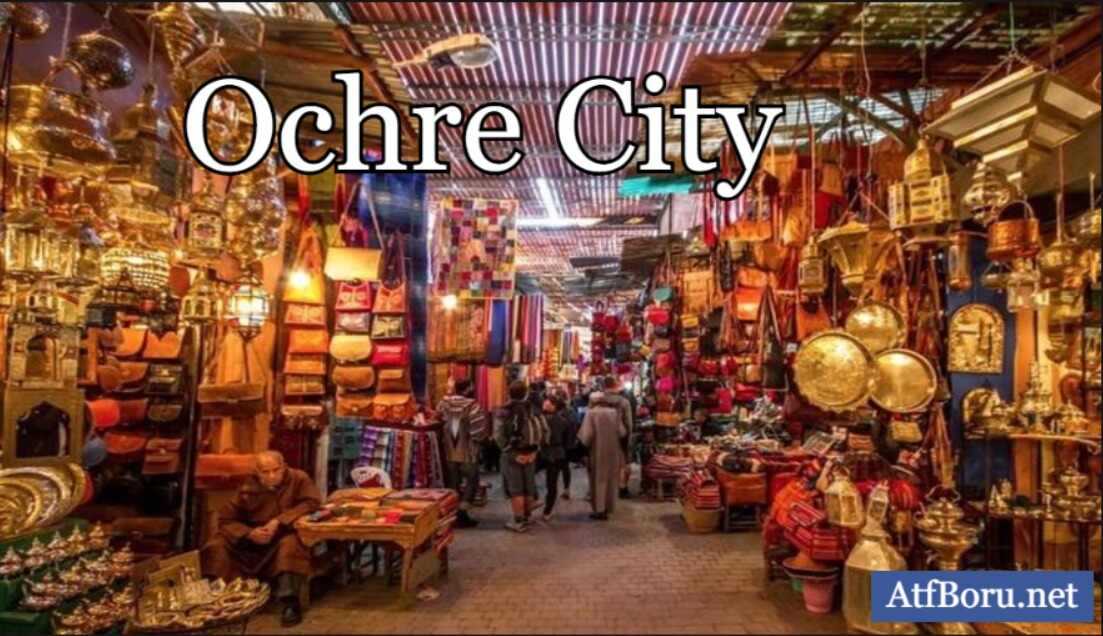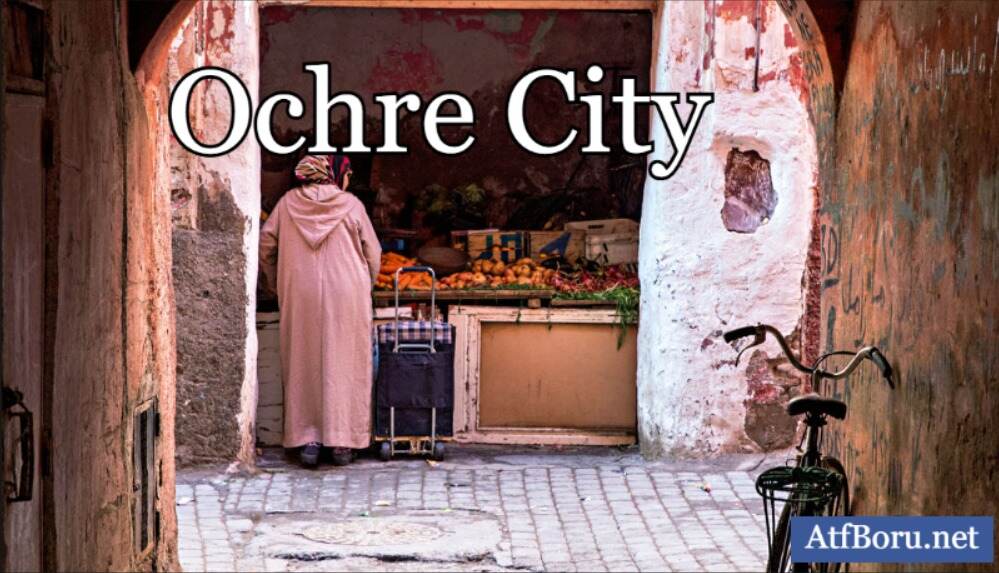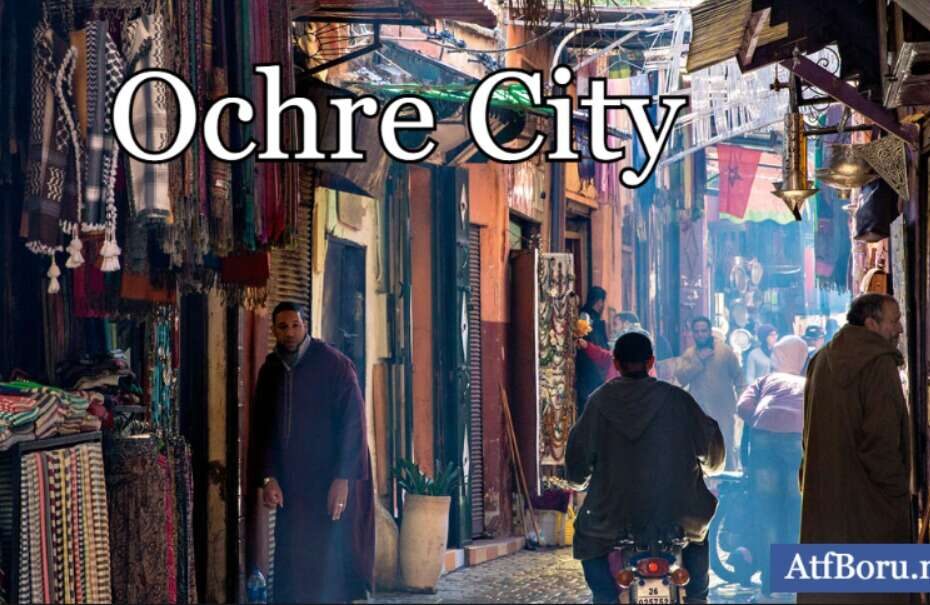Introduction
If you’ve ever wandered through a place where the earth and buildings share the same warm hue, you’ve probably stumbled across an “ochre city.”
These cities, built using ochre, a natural earth pigment that varies in shades of yellow, orange, and red, are a unique part of the world’s architectural heritage.
One of the most famous examples of such a city is Ochre City, the nickname for the town of Roussillon in the south of France. But what is the history of Ochre City, what makes it so special, and why should it be on your travel list?
In this article, we’ll explore the fascinating history, rich culture, and travel tips for visiting Ochre City, a place where color, history, and nature all blend seamlessly.
What is Ochre City?

Ochre City is a term commonly used to describe towns and regions where the natural landscape and buildings are tinted with ochre, a pigment derived from clay earth. This pigment has been used for thousands of years, dating back to prehistoric times.
The ochre, often yellow, red, or orange, is dug from the ground and used in everything from paint to pottery.
The city of Roussillon, located in the heart of France’s Vaucluse region, is often referred to as Ochre City because its buildings, cliffs, and even the surrounding landscape are colored with the vivid hues of natural ochre.
Roussillon’s stunning ochre-rich landscape attracts visitors worldwide, eager to see its brightly-colored streets, homes, and natural sites. The town’s characteristic color is a result of the area’s long history as an ochre production center, which stretches back centuries.
The History of Ochre City
The history of Ochre City is tied closely to the extraction and use of ochre. The natural pigment, made from iron oxide-rich clay, has been used for artistic and practical purposes since prehistoric times.
Evidence of ochre use can be found in cave paintings dating back to 40,000 years ago. The pigment was also historically used in ancient Egypt and Rome to color everything from cosmetics to murals.
In Roussillon and surrounding areas, the ochre mines were an important part of the local economy from the 18th century through the early 20th century.
The hills surrounding the town are rich with ochre deposits, and local miners extracted the pigment to be used in paints and dyes.
By the 19th century, the production of ochre had become an important industry, and Roussillon earned its reputation as Ochre City.
During the 20th century, however, the demand for natural ochre decreased with the rise of synthetic pigments. Many of the mines were closed, but the beautiful colors that remain in the landscape and architecture still draw visitors.
Today, Roussillon is known not only for its history in ochre production but also for its preservation of the natural beauty and architectural heritage associated with the pigment.
The Cultural Significance of Ochre City
In addition to its rich history, Ochre City has deep cultural significance. The use of ochre in the architecture of the town is not just for beauty; it represents the harmony between nature and human-made structures.
The warm, golden tones of the buildings complement the surrounding landscape, creating a visual experience unlike anywhere else in the world.
The town’s color palette is so striking that it has inspired artists, photographers, and painters for generations.
The local culture of Roussillon is heavily influenced by its ochre history. The town celebrates its heritage through events like the “Fête de l’Ocre” (Festival of Ochre), where visitors can learn about the history of ochre, how it was harvested, and how it has shaped the town’s identity.
Local artisans continue to use ochre in their work, creating pottery, textiles, and even paintings in the same colors that have been used for centuries.
This deep connection to the land, color, and history has led to Roussillon and the surrounding region being designated as one of the most beautiful villages in France, and it’s a proud part of the cultural fabric of the Provence-Alpes-Côte d’Azur region.
Key Attractions in Ochre City
For travelers, Ochre City offers a variety of attractions, from natural wonders to historical sites. Here are a few must-visit spots in Roussillon:
The Ochre Trail (Sentier des Ocres)
One of the most popular activities in Ochre City is walking the Ochre Trail, a winding path that takes you through the former ochre mines and the vibrant landscapes of ochre-colored cliffs and hills. This trail offers stunning views of the surrounding countryside and gives you a close-up look at the rich ochre deposits that make Roussillon so unique.
The Town of Roussillon
The town itself is a beautiful sight to behold. Strolling through Roussillon’s narrow streets, visitors will be captivated by the ochre-colored buildings, many of which are painted in warm reds, oranges, and yellows. Don’t miss the chance to stop by the village’s small shops, galleries, and cafes where you can see ochre-inspired art and crafts.
The Ochre Mines and Museum
For those interested in the history of ochre production, the Ochre Mines and Museum offer a fascinating look at the industrial heritage of the town. Here, you can learn about the mining process, the history of ochre extraction, and its use in various products. The museum offers a mix of historical exhibits and hands-on displays.
The Viewpoint Overlooking Roussillon
For the best view of Ochre City, head to the viewpoint just outside the town. From here, you can take in the sweeping vista of the surrounding landscape, where the rich, red ochre hills meet the green fields and blue sky. It’s a perfect spot for photography, offering breathtaking views of the town and its colorful surroundings.
Travel Tips for Visiting Ochre City

When planning a visit to Ochre City, here are some helpful tips to ensure you have a memorable experience:
Best Time to Visit
The best time to visit Ochre City is in the spring or early fall, when the weather is mild and the crowds are smaller. The ochre colors are particularly vibrant during these months, making it a perfect time for sightseeing and outdoor activities.
Wear Comfortable Shoes
The town and its surrounding trails involve a lot of walking, often on uneven terrain. Be sure to wear comfortable shoes, especially if you plan on hiking the Ochre Trail or exploring the mines.
Explore Nearby Villages
While Roussillon is the highlight, the surrounding villages of Gordes, Bonnieux, and Lacoste are also worth a visit. These villages offer stunning views, historic sites, and additional opportunities to explore the Provence region’s rich cultural heritage.
Don’t Miss the Local Cuisine
The Provence region is known for its Mediterranean cuisine, and Roussillon is no exception. Be sure to try local specialties such as ratatouille and lavender-infused dishes. Dining in a local café or restaurant with a view of the ochre cliffs is a memorable experience.
Respect the Landscape
While the ochre cliffs and mines are a major attraction, it’s important to respect the natural environment. Stick to the marked paths and trails to help preserve the beauty of the landscape for future visitors.
Conclusion
Ochre City—with its rich history, vibrant culture, and stunning natural beauty—is a destination that should be on every traveler’s bucket list.
From the colorful streets of Roussillon to the ochre-filled hills and fascinating history of ochre production, there’s something truly special about this part of the world.
Whether you’re an art lover, history buff, or nature enthusiast, Ochre City offers a unique travel experience that combines culture, color, and history.
By visiting Ochre City, you not only experience the beauty of a place but also connect with the stories that have shaped it. So, pack your bags, put on your walking shoes, and prepare to be amazed by the beauty of Ochre City a place where color, history, and culture blend together in the most vibrant way.
